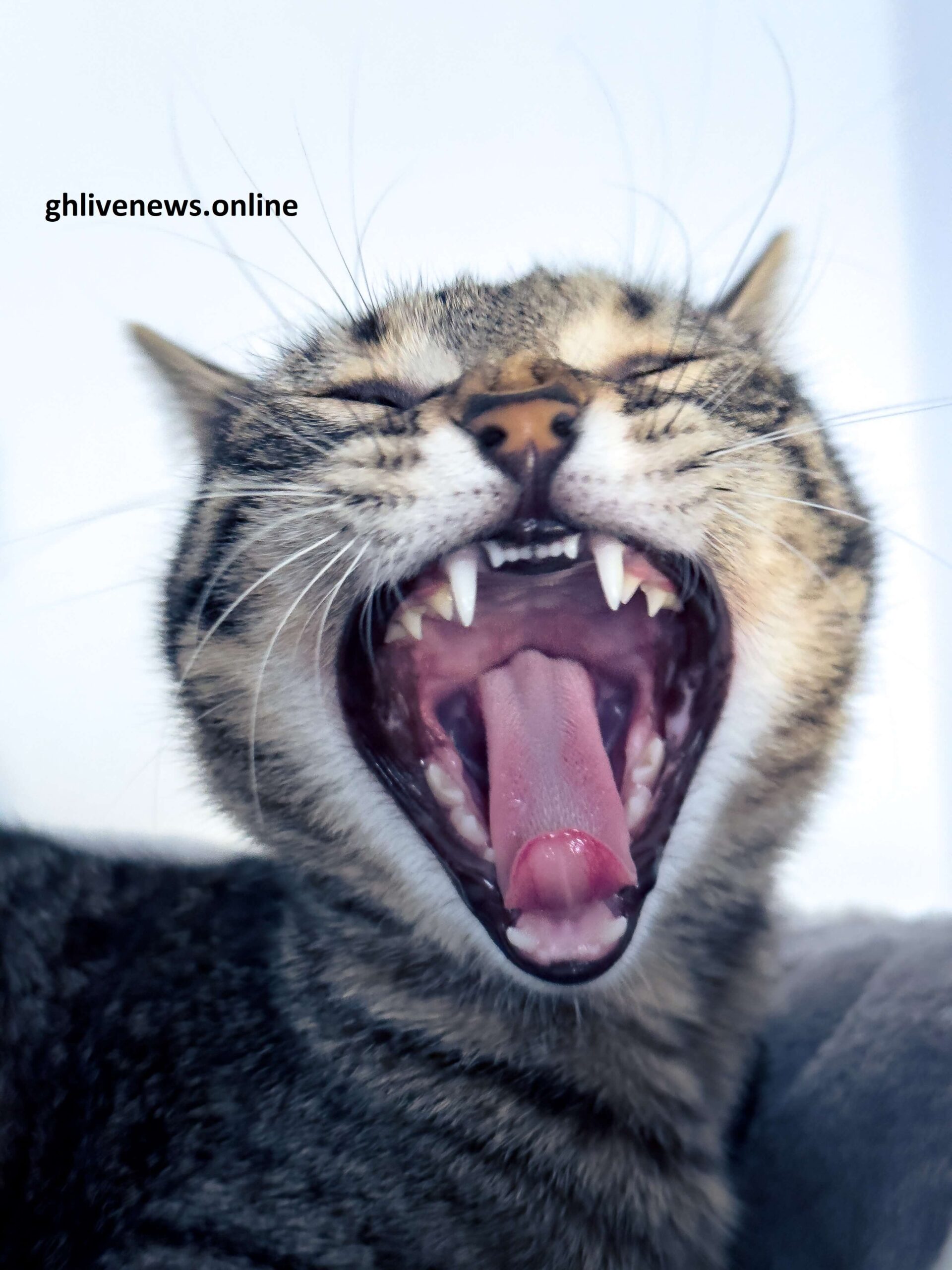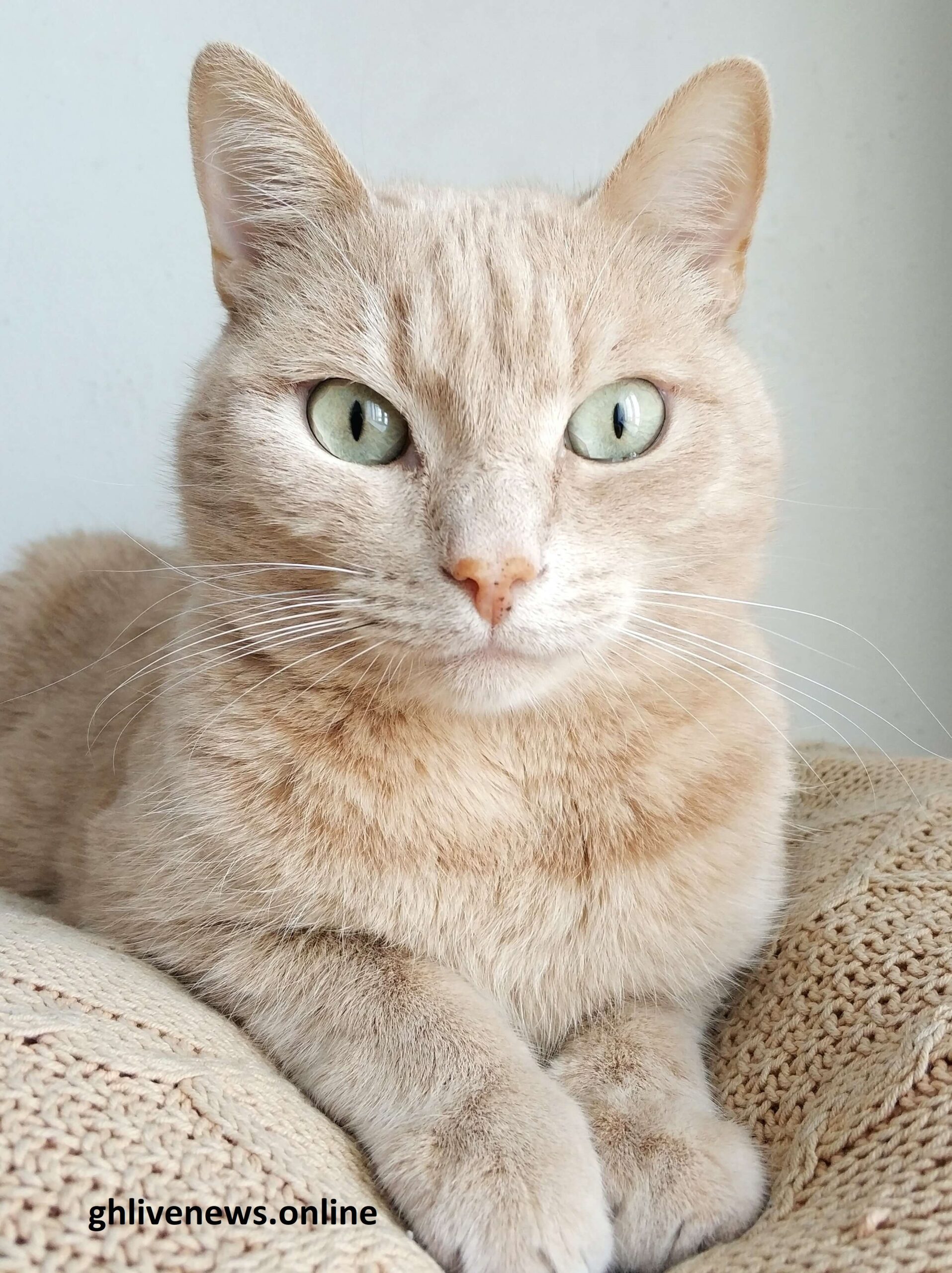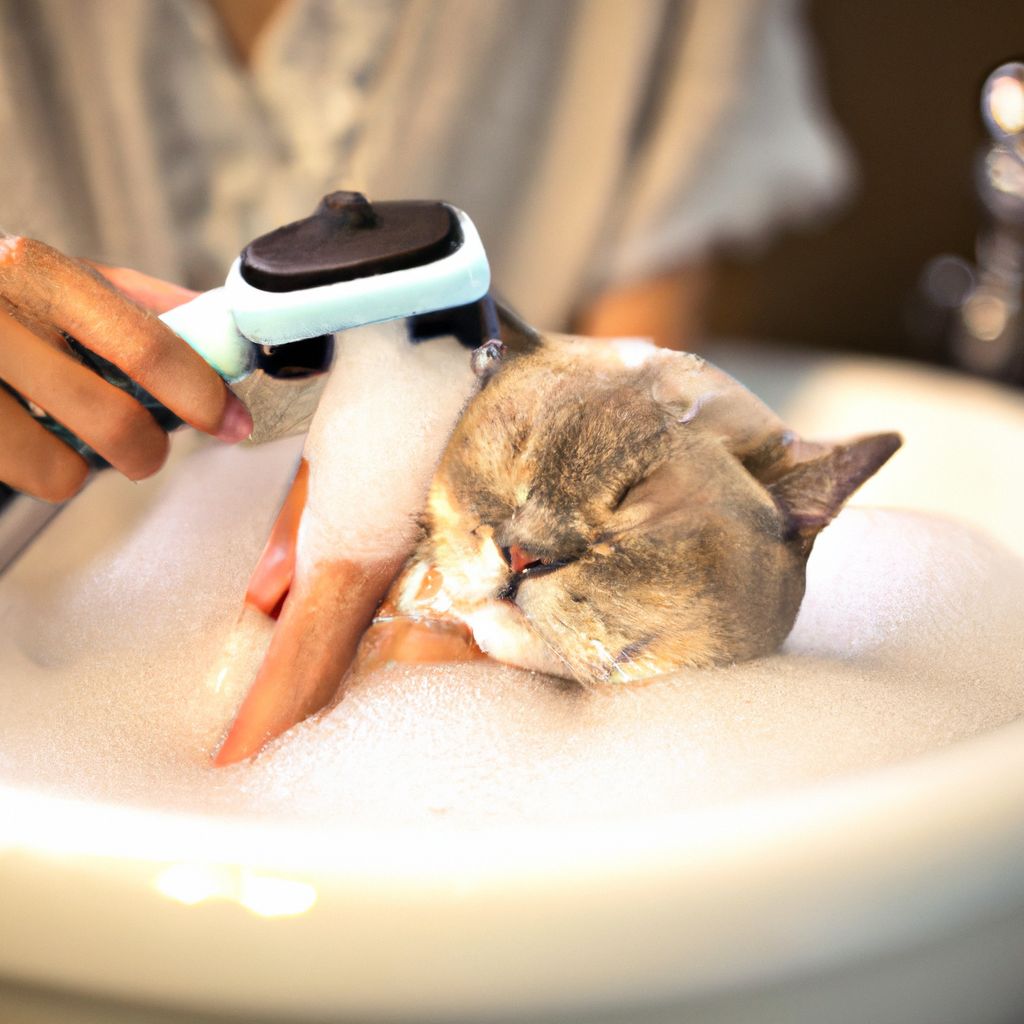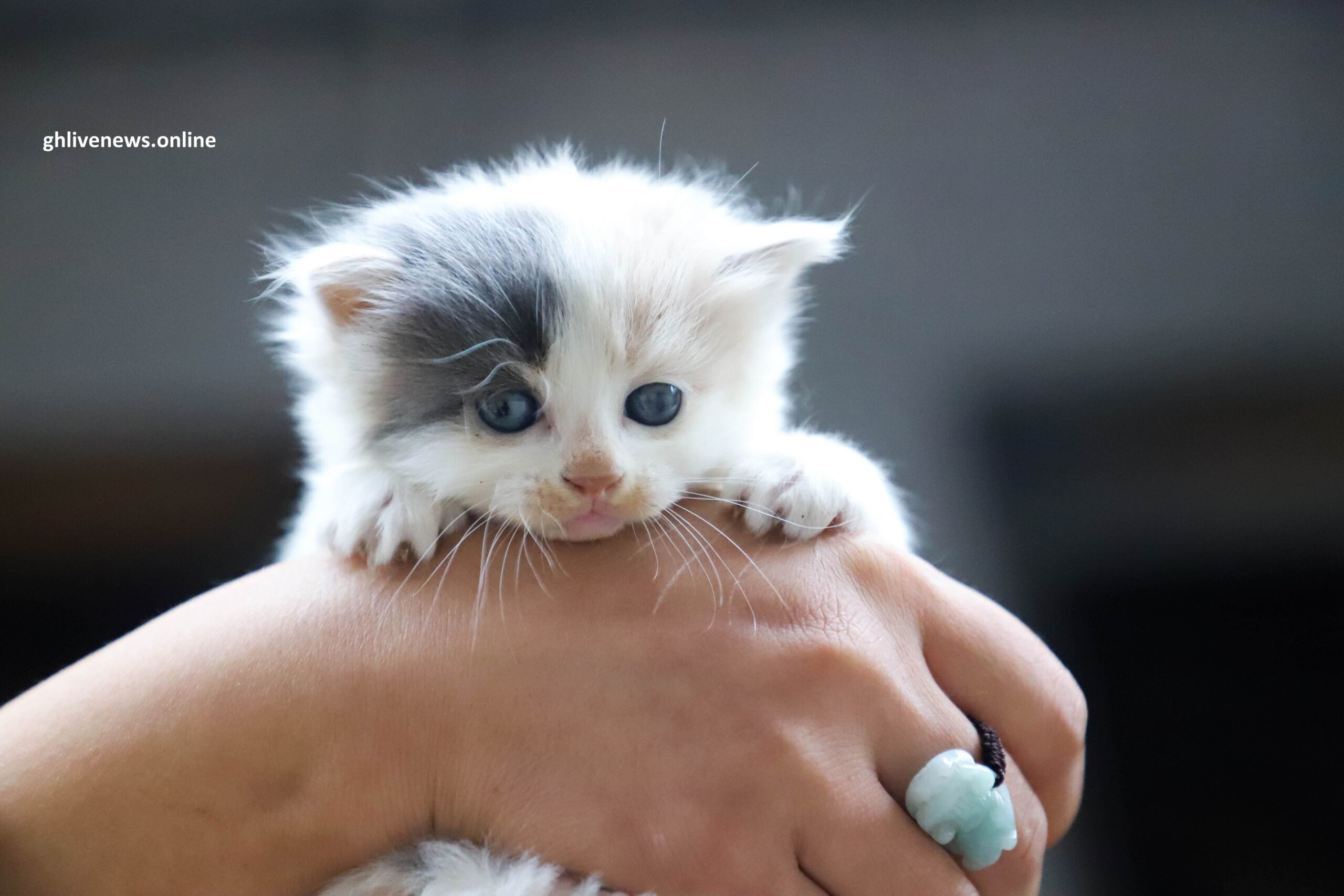.jpg)
Understanding Cat Behavior: Body Language and Communication
Cats are mysterious and their behavior can be hard to interpret. To unravel their secrets and create a stronger bond, take a look at how they communicate using body language. Their tails, ears, eyes, vocalizations, and postures all have different meanings!
Tails twitching? Excited or agitated. Upright tail? Confidence! Ears forward? Attentiveness. Flattened ears? Fear or aggression. Dilated pupils? Arousal or fear. Slow blinking? Relaxed and trusting. Meows of varying pitch and length? Greeting or seeking attention. Arched back? Fear or aggression. Relaxed crouch? Contentment.
Every cat is unique, so watch carefully to get to know individual quirks and patterns. That way, you can respond better to their needs and deepen your bond. Now, go explore the enigmatic world of cats!
The Importance of Understanding Cat Behavior
To better understand cat behavior, dive into the importance of recognizing and interpreting cat body language. Discover the benefits of deciphering their subtle cues, allowing you to form a deeper connection with your feline companion. Let’s explore the art of understanding cat body language and communication.
The benefits of recognizing and interpreting cat body language
Comprehending cat body language is a must for decoding our feline pals. By understanding their non-verbal clues, there are many advantages. Such as:
- Improved Communication: Interpreting cat body language gives us the ability to talk to our furry buddies in a more effectual way. So we can comprehend their desires, feelings, and requirements.
- Stress Decrease: Spotting signs of tension or worry in cats allows us to help them instantly, lessening their discomfort and promoting a calm atmosphere.
- Bond Strengthening: Interpreting cat body language strengthens the relationship between pet and owner. It creates trust, mutual respect, and a feeling of safety, resulting in a stronger bond.
- Prevent Misunderstanding: Accurately reading cat body language helps stop miscommunication or misinterpretation. This reduces the chances of avoidable conflicts or mishandling.
Moreover, recognizing cat body language means observing slight signs such as tail position, ear position, vocalizations, and total body stance. These hints give us knowledge into feline feelings and objectives.
Cats have been captivating animals with puzzling behavior for a long time. One amazing story dates back to old Egypt where these magnificent animals were respected as sacred creatures. Egyptians realized the significance of comprehending their behavior and thought of them not only as pets but also as symbols of protection and luck.
Decoding Cat Body Language
To understand cat behavior, decoding their body language is key. With a focus on facial expressions, ear movements, tail positions, movements, posture, and gestures, you can gain valuable insights into what your feline friend is trying to communicate.
Understanding facial expressions and ear movements
Ancient Egyptians worshipped cats for their mysterious powers. So, they observed their facial expressions and ear movements closely. After centuries of study, us humans now understand these subtle yet meaningful signals cats use to express themselves.
Decoding cat body language is not an easy task. We need patience, intuition and attentiveness. When we can read our cats’ emotions through facial expressions and ear movements, we can respond to their needs properly and create a more harmonious environment.
Let’s explore the mysteries of cats’ nonverbal communication! For instance, if your cat’s tail is up, it could mean ‘I’m fabulous‘. However, if it’s accompanied by evil eye contact, then watch out – they’re plotting your demise!
Interpreting tail positions and movements
Cats’ tails can tell us a lot about their moods and intentions. Knowing the moves and postures of a cat’s tail can help us understand what they are feeling and how they may act in different situations.
If a cat holds its tail high, it usually shows confidence and friendliness. This is seen when cats greet their owners or other people they know.
A puffed-up tail means a cat’s feeling threatened or scared. It’s a defensive action that makes them look bigger and more intimidating to potential predators.
Contrary to belief, a wagging tail isn’t always a sign of happiness. It can show annoyance or agitation. To figure out its emotions, watch other body language cues.
Twitching of the tip of the tail usually means the cat is focused on something – like a prey or object that interests them.
Lashing or thrashing tail is an indication of anger or frustration. It often leads to aggressive actions like biting or scratching. So, when you see this, it’s best to give the cat some space.
By knowing these signs, we can better understand our cats and avoid any misunderstandings. We can use their tails to deepen our connection with them. So, when you’re with a feline, pay attention to their tail movements!
Observing posture and gestures
Our feline friends can tell us a lot through their posture and gestures. Here are some key points to bear in mind when observing them:
- A relaxed, comfortable posture with a tail held upright or curved gently means they are content and open to interaction.
- If their tail is puffed up and body tense with fur standing on end, it’s a sign of fear or aggression. They may also arch their back to appear larger and more intimidating. Give them space if you spot this.
- Ears that are forward-facing and relaxed show they are calm and approachable. Flattened or backward-facing ears suggest fear or anger – avoid startling them.
- Wide-open eyes indicate interest or excitement, while narrowed eyes suggest discomfort or irritation. Dilated pupils usually mean arousal or fear.
- Every cat is unique, so consider the context and any other behaviors they display before drawing conclusions.
The ancient Egyptians understood the nuances of feline body language, allowing them to communicate with cats on a deeper level. We too can interpret what our cats are saying – it may surprise us!
Cat Communication Through Vocalizations
To understand cat communication through vocalizations, delve into the differentiating meows and purrs, and unravel the meaning behind hissing, growling, and screaming.
Differentiating between different meows and purrs
Cats have their own unique language! Hissing, growling, and screaming are all part of it – like they’re auditioning for a horror movie! But they’re just expressing themselves. Let’s explore some common types of meows and purrs to help us better understand them.
Short Meow: A brief, high-pitched sound. Greeting or asking for attention.
Prolonged Meow: A long meow, often with purring. Urgent need or desire for something specific.
Chirping Meow: Short, bird-like chirps. Excitement or hunting prey.
Purring is another way cats communicate. It’s often associated with contentment, but can also mean anxiety or pain. Listen to the pitch, tone, and duration and look at body language to understand what your cat is feeling.
Next time you hear your cat vocalizing, take the time to really listen and observe. You can strengthen your bond by understanding their vocalizations. Don’t miss out on the opportunity to get closer to your feline friend. Pay attention and show them love and care.
Understanding the meaning behind hissing, growling, and screaming
Cats have been hissing and growling for centuries. Ancient Egyptian wall paintings even show this! This is proof of how important it is to understand your cat’s vocalizations, to build a strong bond.
To decode your cat’s hisses, growls, and screams, you must pay attention to both the verbal cues and the body language. This way, you can really comprehend what your cat is trying to say.
Why use words? A simple flick of the tail can convey so much more!
Communicating with Your Cat
To effectively communicate with your cat in understanding their behavior, body language serves as a vital tool. By using body language, you can convey your intentions clearly and build a stronger bond. Additionally, communication with your cat is a means of establishing trust, deepening your connection, and nurturing your feline relationship.
Using body language to communicate with your cat effectively
Using body language is a great way to talk with your cat. Interpreting their non-verbal clues correctly can build a closer bond and make sure communication is clear. Here are some tips:
- Eye contact: Maintaining eye contact with your cat shows trust and love. But a prolonged, intense look could be a threat.
- Posture: Your cat’s posture tells you a lot about their mood. A relaxed body, with even a tummy showing, means they are content.
- Tail language: A cat’s tail is an important sign of how they feel. A flicking tail or one held high means excitement; puffed-up means fear or aggression.
To get the message right, pay attention to the small details. Ears, whiskers and vocalizations also give clues. Being alert to these subtle signs will help you understand what your cat wants and needs.
A top tip for talking to cats? Patience is the key. Creating a bond takes time and effort. By noticing and responding to your cat’s body language often, you’ll learn what their signals mean and grow a stronger relationship.
Establishing trust and strengthening the bond through communication
Gaining trust and deepening the bond with our feline pals is very important. To understand their language, observe and pay attention to what they say non-verbally. Patience is key. Notice the body language, grooming and eyes of your cat. Respect their personal space and let them explore. Also, vocalizations are unique, so listen to the tone for hints on their state of mind.
My own experience with my tabby cat showed me the value of communication. When I’d get home, he’d meow and rub his head against my legs – his way of showing love. By being consistent and attentive, we created an unbreakable bond.
Remember that when your cat stares at you, they’re not judging you, they just want you to open the tuna can.
Common Misinterpretations and Misunderstandings
To better understand common misinterpretations and misunderstandings related to cat behavior, explore the sub-sections: ‘Exploring common misconceptions about cat behavior’ and ‘Correcting misinterpretations for better understanding.’ See how these insights can shed light on the complexities of cat body language and communication, leading to a deeper understanding of our feline friends.
Exploring common misconceptions about cat behavior
Cats have long been a source of fascination for humans. However, many misconceptions about their behavior exist. To gain a better understanding, let’s explore these misunderstandings.
Contrary to belief, cats are not solitary. In fact, they are social and form strong bonds with their owners and other cats. They also seek out attention and affection, contrary to being aloof.
Cats are not exclusively nocturnal – though they may be more active at night, they can adjust their schedule to match their family’s. Contrary to popular belief, cats can be trained. With patience and reward, they can learn commands and tricks, like dogs.
Cats purr when they are happy, but also when stressed or in pain. Context is important to understand the meaning.
Each cat has its own personality and preferences, which can deviate from generalizations. Ancient Egyptians revered cats as sacred animals with supernatural powers, worshiping them as deities – this reverence affects our perception of cats today.
By dispelling myths, we can form a stronger connection with cats and create a more enriching environment for both parties. Understanding why cats always land on their feet and toast lands butter-side down is key in clear communication.
Correcting misinterpretations for better understanding
Do you want to take on cat behavior challenges? Well, good luck! Cats have a way of making humans their personal assistants.
Misinterpretations often arise from misinformation or oversimplification of complex ideas. It is hence vital to delve deeper into topics and consider various perspectives for better understanding.
Moreover, misinterpretations can have damaging consequences in different areas. Jones (2003) found that misinterpreted medical instructions caused adverse effects on patient health. Thus, recognizing and correcting misinterpretations is highly important.
In conclusion, by acknowledging and fixing widespread misconceptions, we can promote more accurate understanding of various topics and facilitate effective communication. Seizing the chance to clarify these misunderstandings allows for better knowledge dissemination and, ultimately, better societal outcomes.
Tips for Handling Cat Behavior Challenges
To address cat behavior challenges, delve into tips for handling aggression and territorial issues, as well as strategies for dealing with anxiety and stress-related behaviors. Understand the nuances of cat body language and communication to effectively navigate these challenges.
Addressing aggression and territorial issues
To manage aggression and territory issues in cats, there are some tips to consider:
- Provide hideouts and vertical space to give them a sense of security.
- Reward calm behaviour with treats and praise.
- If conflicts arise, create separate feeding and litter areas.
- Redirect aggression to toys or scratching posts.
- Consult a vet or animal specialist for professional advice & potential medicine.
- Consider using pheromone sprays or diffusers to make a calming environment.
Each cat is unique, so patience and understanding are essential. I had a male cat who was aggressive. Implementing these strategies helped us control his territorial instincts. Gradually, he became more social and adapted to the changes. Understanding the triggers of your cat is key to resolving aggression and territory issues.
Dealing with anxiety and stress-related behaviors
Anxiety and stress-related behaviors in cats can be tricky to manage. Here are some tips to help:
- Create a safe and calm space for your cat to relax in.
- Establish routine and consistency in their daily lives. Cats need predictability, so regular feeding and play times can reduce anxiety.
- Include interactive toys and puzzles to keep their minds active. Stimulation can help divert attention away from stressful situations.
- If needed, consult a vet or animal behaviorist for more guidance. They may suggest desensitization or medication.
Getting to know your cat’s anxieties and stressors is key to addressing their behavior.
Let me tell you about Samantha, a 5-year-old tabby cat who groomed excessively when her owner was away. This caused bald spots due to stress-induced grooming. With help from a vet, the owner implemented environmental enrichment strategies like interactive toys and items with the owner’s scent. Through time, patience, and personalized care, the behavioral challenges were managed.
If all else fails, try telepathy – but don’t be shocked if they telepathically ask for a snack!
Conclusion: Enhancing Your Connection with Your Feline Friend Through Understanding and Communication
Developing a deeper bond with your furry companion is possible! Decode their body language and recognize their unique behaviors to strengthen your connection. Cats express mainly through body language, so observe their gestures, postures, and vocalizations. For example, purring usually means contentment or relaxation. On the contrary, a puffed up tail and arched back may indicate fear or aggression.
Additionally, be aware of your cat’s preferences and dislikes. Just like humans, cats have individual personalities and preferences. Some cats enjoy being petted, while others may prefer their own personal space. Provide a safe and comfortable environment to encourage trust and connection.
Plus, actively engage with your cat to further enhance your relationship. Playtime not only is beneficial to physical health, but also strengthens the emotional bond. Invest in toys that stimulate their hunting instincts or activities that promote mental stimulation.
My cat Luna is a great example. She was a shy rescue cat, hesitant around humans. But with patience, observation, and positive reinforcement such as treats and praise, trust was gradually built. Eventually, Luna became more affectionate and started approaching me for cuddles willingly.
Frequently Asked Questions
Q1: How can I understand my cat’s body language?
A1: Understanding your cat’s body language requires observation and knowledge of common feline behaviors. Observe their ears, tail, and overall posture, as well as any vocalizations or physical movements.
Q2: What does it mean when my cat’s tail is puffed up?
A2: A puffed-up tail typically indicates fear, agitation, or aggression in cats. It serves as a warning sign to other animals or humans that the cat feels threatened or uncomfortable.
Q3: Why does my cat knead me with its paws?
A3: Kneading is a behavior inherited from kittenhood, where cats rhythmically push their paws in and out against a soft surface. It typically signifies contentment, relaxation, or a need for comfort.
Q4: What does it mean when my cat flicks its tail back and forth?
A4: A flicking tail is often a sign of agitation or frustration in cats. They may be feeling irritated, anxious, or ready to attack. It is best to give them space and avoid close interactions during this time.
Q5: Why does my cat rub its head against me?
A5: Head rubbing is a form of feline communication known as bunting. By rubbing their scent glands located on their cheeks, cats mark you as part of their territory, show affection, and seek familiarity and comfort.
Q6: Is hissing a normal behavior for cats?
A6: Yes, hissing is a normal defensive behavior in cats. They usually hiss when they feel threatened, scared, or want to establish boundaries. It is best to respect their space and avoid provoking them during this time.
Originally posted 2023-06-28 19:44:09.





